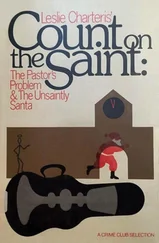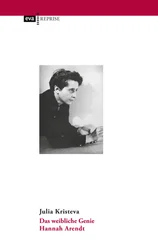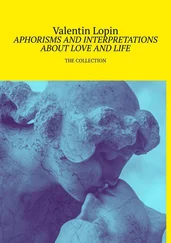Such a wealth of tendencies, however, can never overshadow the Torah and the Talmud, writings that destined the Jewish people — committed to biblical exegesis and free of major mystical interferences — to a ceaseless study of the texts, so as to imbue themselves with the spirit of God’s Law and put it into practice, thus assuring the salvation of the chosen community.

Bruno is far away, it would be untrue to say I ever think about him, and yet I feel him alongside me, inside me, for example when I’m leafing through the Beguines catalog. My readings of the past few weeks are arranged in my mind like the surrealist collages of those bygone pious women who piled bits of string and handfuls of rose petals around the figure of Baby Jesus. The Sovereign Infant was liable to disappear altogether under the cumulative passion of those tender sisters. He merged with the huge heart they embroidered for him in cross-stitch or molded out of crushed, colorful butterfly wings, a heart that was the real theme and focus of the work. Was it Jesus’s heart, or was it theirs?
It would be wrong to assume that contemporary artists have transcended this kind of reiterative, magpie accumulation. I see a lot of it in the galleries, and most often the artist is a woman. One, Annette B., trusted me enough to lie down on my couch. Her wary, piercing eyes seem cloned from Picasso’s. As a rule her words do not get past her lips, or only in spurts of dulled, futile complaint, abruptly doused. A long, frozen silence ensues. When the artist can no longer bear her own speechlessness, she brings me some “beguinesques,” as she calls her confections of twisted threads, mounted letters, screws of paper, beads, buttons, leaves, and a series of tiny cut-up photographs, skillfully embedded in the vortices of this kaleidoscope of mega-significant nothings. Photographs of her dead children. Impossible icons of impossible loves. Annette’s “beguinesques” succeed in making such impossibilities visible. At least to people who enjoy looking. And who’ve been through a vortex like hers.
I cut out my data, I sort, I glue, I amass. My canvas is taking shape. No, it’s lost me. Later on I will set Teresa into it and she will resorb the picture, all that will be left is her very own heart, her style, her beat.

Might it be because Muslim mysticism slumbers in the form of “Koranic seeds” within the values, if not the formulations, of the dogma? Or is it down to the Neoplatonic influence? In any case, the first mystics appeared in eighth-century Iraq, as bands of ascetics who cultivated trust in God ( tawakkol ). They “repeated” God’s name and began to believe in a prior communication between God and His creature. A little later, clad in white woolen garments ( suf ), the Sufis gathered into spiritual circles and concerts, bent on a loving union with God. Schools sprang up in the cities of Basora and Baghdad, then across Afghanistan, India, and Egypt, until the advent of the Master, al-Hallaj, a mystic who was martyred in 922 C.E. 23The Hellenic origins of this mystical experience, which took the form of a poetic quest, are not in doubt. It was a “science of the heart” that sought to transform the sensible body into pure “spirit” (in philosophical terminology) through the burning love that consumes the saint, disposed to “isolate himself before the One.” “Legal war” thus mutates into “inner war,” and the Seal of Saints embodied by Jesus is set against Muhammad’s Seal of Prophets; God is henceforth to be sought within, and the mystic, rather than overthrow the Law, transcends it. “I have become the One I love and the One I love has become me. We are two spirits infused in a single body,” wrote al-Hallaj.
Whether focused on reciprocal love (al-Nuri), private inspiration (Ibn Karram), or union with God (al-Hallaj), Sufism borrowed the spiritual methods of Christian monachism while influencing that movement in return. It also appropriated Hindu and Persian techniques.
Accused of heresy and impiety, stigmatized for its incompatibility with the Law of Islam, Sufism finally found a direction: the compromise between juridical authority and ecstasy paved the way for its esoteric brotherhoods. Notwithstanding some serious deviations that degenerated into opium clubs and sham whirling dervishes with dodgy morals, in the eighteenth century, philosophical Sufism became an “existential monism,” with the Andalusian Ibn al-Arabi: no distinction between the soul and God any longer subsists in the mystical union. 24Committed to immanentism, eschewing neither literal meaning (anathema to the Shi’a) nor sacred meaning, this current believed that the Absolute cannot become conscious of itself other than through Man in the image of God. In Sufi thought, then, immanence and transcendence are not mutually exclusive, and opposite meanings (as in the “primitive words” studied by Freud) coincide, since the Unique is manifest in the All. “I mean that you absolutely do not exist, and never will exist by yourself alone, any more than by Him, in Him or with Him. You cannot cease to exist, because you do not exist. You are Him and He is you, without dependence or causality. If you accept that quality of your existence (which is to say, Nothingness), then you shall know Allah. Otherwise you shall not.” As a result, “the prayers of lovers are blasphemous.” There are five steps leading to this revelation of Being at the same time as the impossibility of Being: “there is of him only Him”; “there is of you only You”; “there is of me only Me”; “I-ness, you-ness, he-ness, all these are viewpoints that add to the eternal essence of the One.” Set in motion by God, the experience soars into the “limitless,” where it is vividly clear that only “he who is not in love sees his own face in a pool.”
Meanwhile, as of the eleventh century, mystical poetry had put down roots and thrived, feeding off profane, erotic, and bacchic poetry. The “sultan of lovers,” Ibn al-Farid was one such, 25along with the Persian mystic Jalal ad-Din Rumi, founder of the whirling dervishes brotherhood, 26and the Turkish poets Nesimi and Niyazi.
This adogmatic Muslim mysticism resisted integration into the Islamic mainstream, until the Sufi theologian and philosopher al-Ghazali proposed a “mystical orthodoxy” that would complete traditional knowledge with a “taste” or realization of God: an intimate knowledge that was gained through tempered asceticism. 27Sufism went on to spread the cult of thaumaturgical saints — including al-Hallaj, 28the most revered of all despite his excommunication — and became a “popular religion,” treating the Muslim faithful to that “taste” the jurists had denied them and so reinvigorating the moderate morality of that faith. 29

“Hello? Can you hear me, Sylvia? Where am I, I’m in Thailand! Told you, didn’t I? Okay, my mistake. The Phuket beaches, crawling with tourists…Fantastic. No sign of the tsunami…at least not around here…Me, scared?…Of course people have short memories, what do you expect, that’s life…Oh, the usual, swimming and sleeping. And I’ve been going to this Buddhist temple…Sylvia, please, the Muslims are in Indonesia…Actually no, I haven’t converted, or not yet. But I’m great chums with one of the bonzes. I’m approaching the Void. Go ahead, laugh! If you’re not wise to Nothingness, my dear, you may as well give up the mysticism game. Even your baroque saint must have known that…The Void is at the bottom of everything, you dig?…How do you mean, compatible with my lifestyle? These Buddhists are highly pragmatic fellows…Tomorrow I go to Banda Aceh with this NGO, old friends of mine, they’re building boats for the fishermen who lost everything in 2004, you know. We’re going to walk the sandbank in Lhoong…really beautiful…So you’re surprised to see me doing something humanitarian? That’s right, it’s got a lot to do with the boys and their gurus…They’re fine, thanks…And so’s Stéphanie, why do you ask. You know it’s finished…Just a stop-off in India…Yes, of course we’ll do a book, with photographs, it’s the trend, and besides it’s my job…That’s right, everything is connected. I don’t have to explain that to you of all people…Ciao, take care…kisses and all that, you know.”
Читать дальше













